Essential Knitting Tools & Accessories
When you’re about to start knitting for the first time, it feels pretty straightforward. You think, “All I need is some yarn and a pair of needles.” And honestly, you’re not wrong. That is enough to get going. But as you knit more, you’ll notice there are a bunch of tools and accessories that can make your knitting life easier. Some knitting tools are essential, some accessories are just fun to have.
So, we’ve pulled together a list of our favourite knitting tools, along with some of the most commonly used accessories you’ll spot in patterns. Whether you’re just getting started or looking to round out your toolkit, this guide will help you figure out what you might want to keep on hand.
Also, we will link to helpful resources throughout this post, and at the bottom, you’ll find a Quick-Reference Checklist PDF you can use to keep track of what you have.
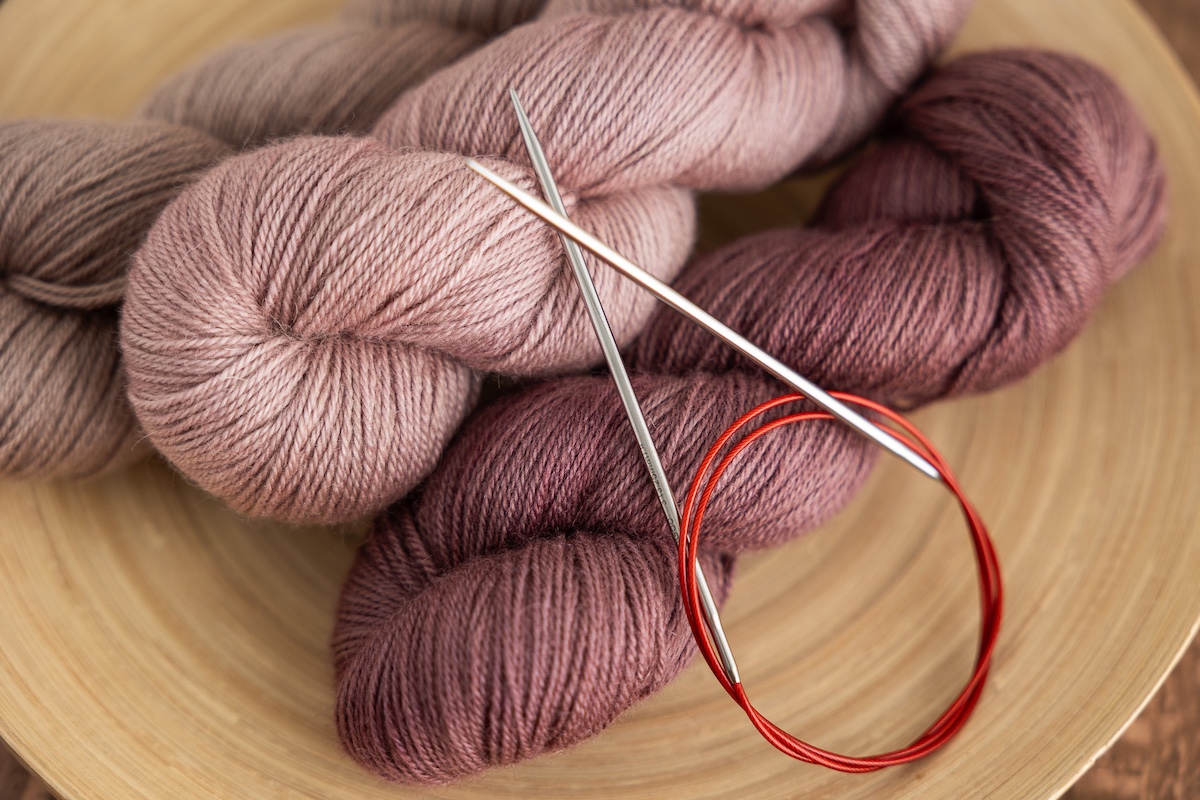
You Can’t Knit Without…
Let’s start with the basics: needles and yarn. We won’t go too deep here since we already have articles that cover different styles, materials, and types of both.
Needles
Many knitters end up collecting a mix of needles over time, metal, wood, circular, straight, and the plethora of other options available on the market today. Read more in the Which Knitting Needle is Right for You?.
Yarn
Yarn choices are just as varied. Wool is a favourite, but there’s also cotton, alpaca, silk, and so much more, not to mention all the blends to explore and how the yarn was made. We have many articles on yarn on our Learn Knitting page!
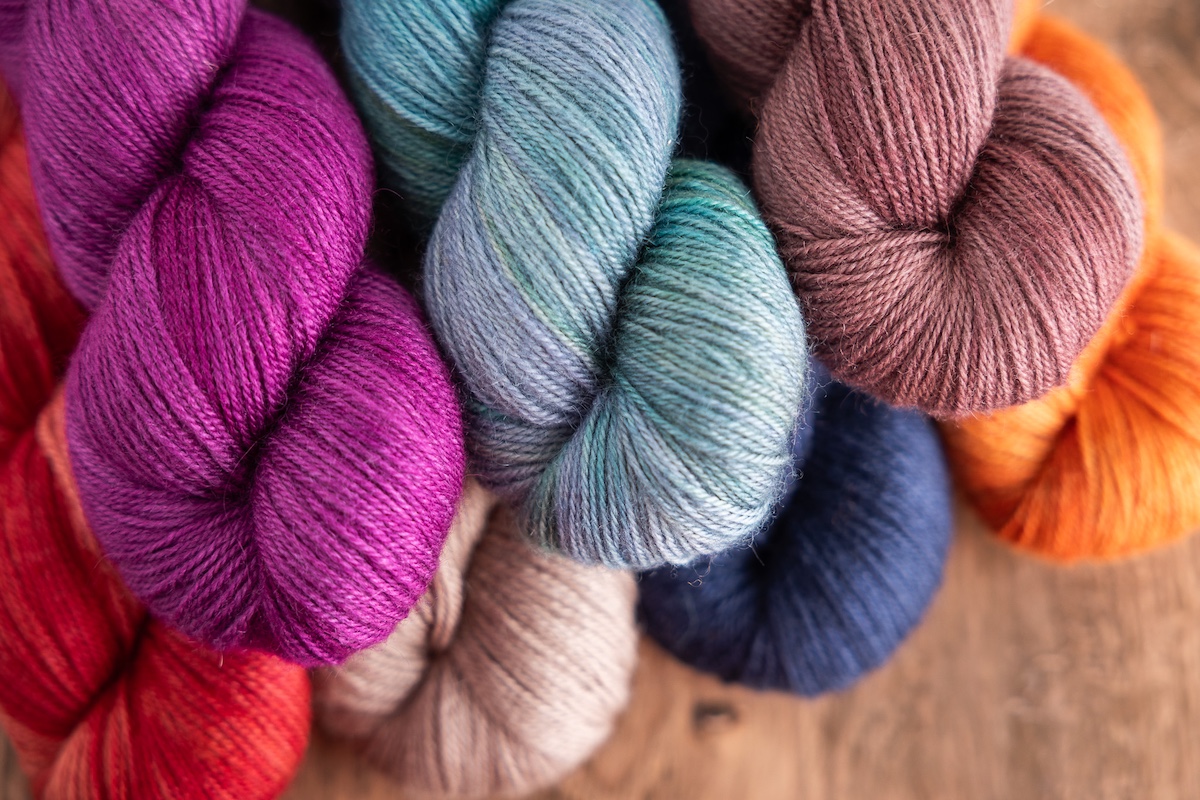
Common Notions in Most Patterns
Here are some of the most commonly used knitting tools, accessories, and notions you’ll come across. Many are small but mighty, and you’ll likely collect your own favourites over time.
Scissors
Small scissors or snips are great to keep in your project bag. Most small scissors under 2 inches are fine on planes (though always double-check with your airline), and some even come in a foldable option. You can even use nail clippers in a pinch. Embroidery scissors are extra helpful if you ever steek your fabric, you want something small and sharp for control.
Darning Needle
Also known as a tapestry or yarn needle, is used for weaving in ends or adding embroidery. Some knitters prefer bent tips, others straight. It’s personal preference. Thicker yarns need bigger needles. We like the Clover Chibi Darning Needle set, giving a variety of sizes as well as a case, so they don’t get lost or sat on.
Stitch Markers
You’ll want a good supply of these. Removable or locking stitch markers and ring stitch markers are perfect for tracking rounds, repeats, increases, decreases, sides of the fabric, and more. They are practical, sometimes colourful, or just be bling for your current work in progress. Just beware: your couch loves to eat them, so keep a few extras nearby. Safety pins, scraps of contrasting yarn, or even rings from other household items (like electric toothbrush heads) can all work as DIY alternatives.
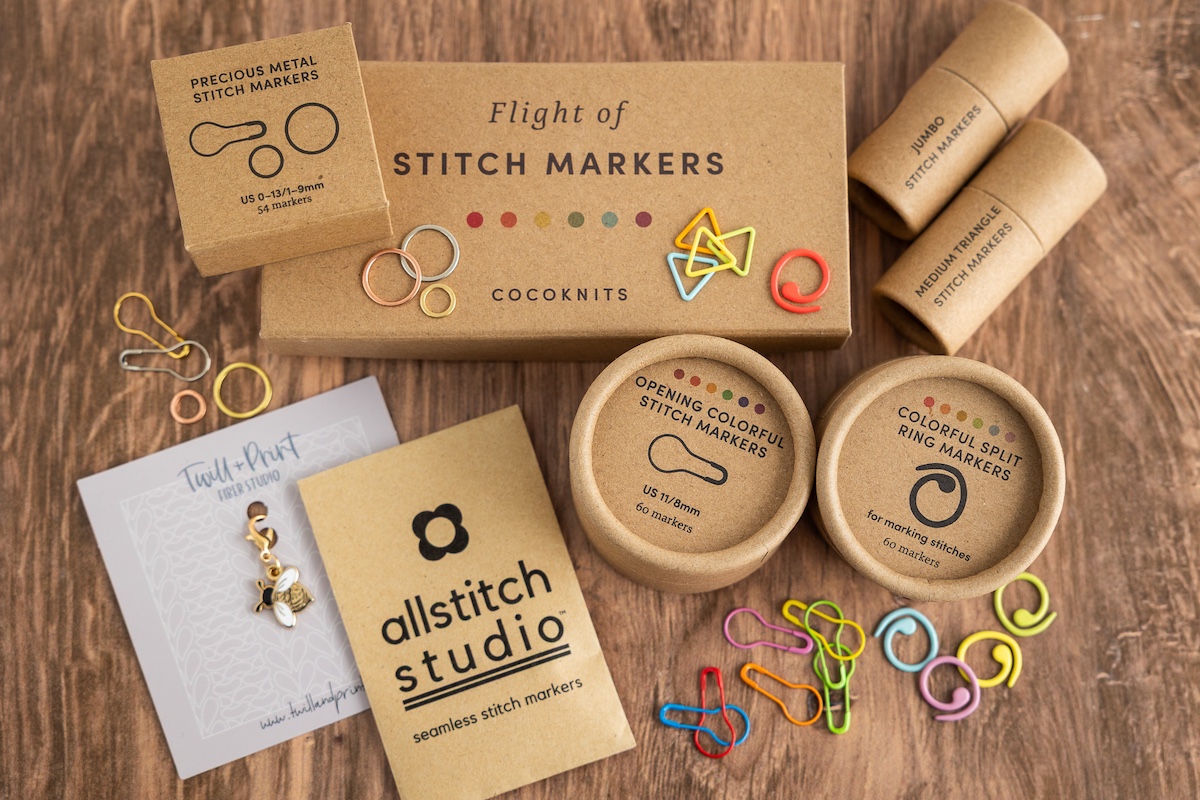
Items Often Needed but Not Usually Listed
Some items don’t always make it onto a pattern’s notion list, but you’ll quickly find they’re essential.
Measuring Tape
A soft tape measure is a must, especially for garments. How else will you know if something fits if you don’t know your own measurements? Look for one that’s compact and auto-retracts; it makes measuring (and putting it away) quick and easy.
Hard Ruler
Gauge matters. Every pattern has a recommended gauge, and this helps you check that your fabric matches the designer’s. You can use a hard ruler to count stitches, but gauge ruler tools make it easier, especially ones with a magnifier to help see those tiny stitches.
Yarn Swift & Ball Winder
If your yarn comes in a skein, you’ll need to wind it into a ball. You can do this with a friend holding it between their hands, or wrap it around a chair or two pegs. But if you’re doing this regularly, a yarn swift and ball winder save time and frustration. The yarn swift, also known as an umbrella, holds the yarn under light tension, and the winder helps you make neat centre-pull balls. Plastic winders are cheaper, but wooden ones are easier to repair if needed.
Nostepinne
Another option, instead of a ball winder, is a nostepinne. This is a tool that will last a lifetime and makes great centre-pull balls. The only disadvantage is that it is. a bit on the slow side.
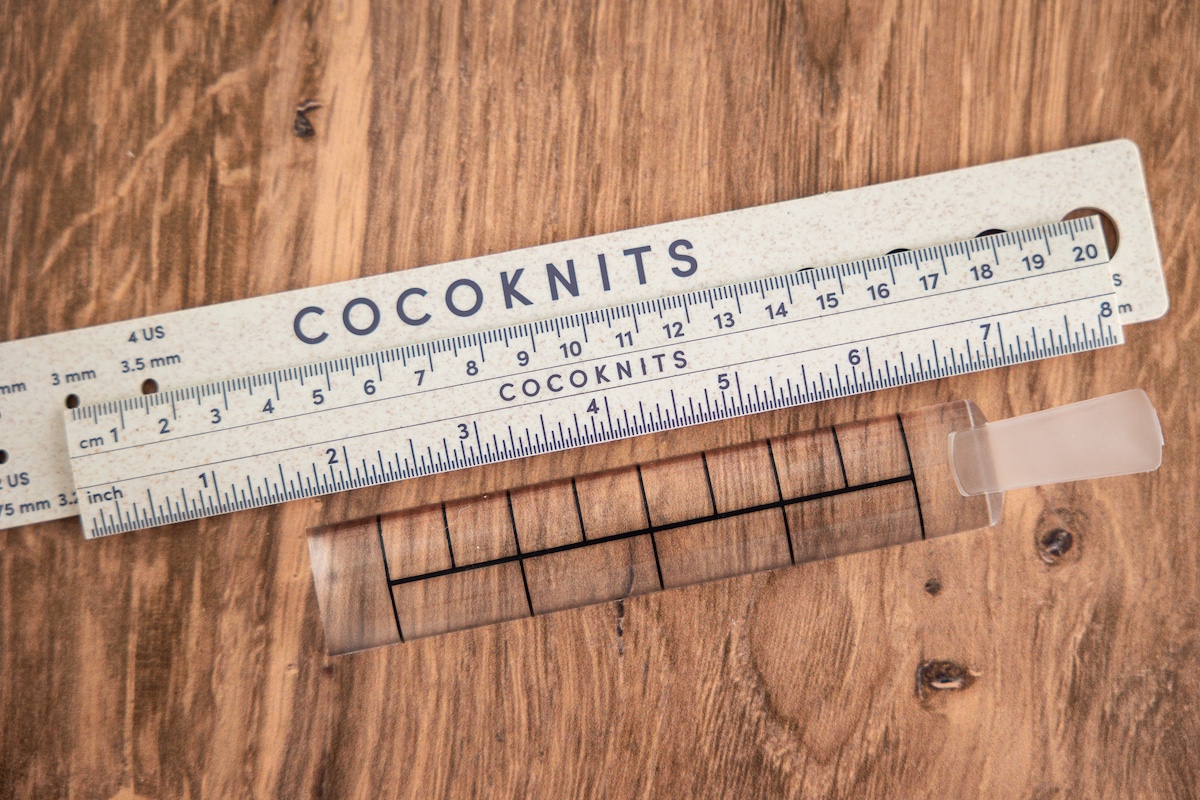
Keeping You Organized
Items that help you stay on track in patterns and keep your stitches safe while you work on your project!
Pattern Chart Holder
If you like using paper patterns or charts, a pattern chart holder helps keep your place and stay organized. Another option is to use Post-It notes to mark where you are. We also like plastic page protectors to keep your pattern notes together and allow your Post-it notes to stay sticky longer!
Row Counter
Keeps track of rows easily, especially when working with pieces like identical sleeves or two cardigan sweater fronts. You can use a physical counter, an app, or even stitch markers placed strategically to help you count.
Stitch Holder
For holding live stitches while you work on other sections of the project. They come in a few styles, from small ones that look like oversized safety pins (great for thumb stitches on a mitten or pockets) to flexible cords for larger sections (like for trying on garments for fit). A lot of knitters will invest in an interchangeable knitting needle set, which will usually include a longer cord that you could use for this as well. Scrap yarn works too, as long as it’s smooth and in a contrasting colour, so you can see it later.
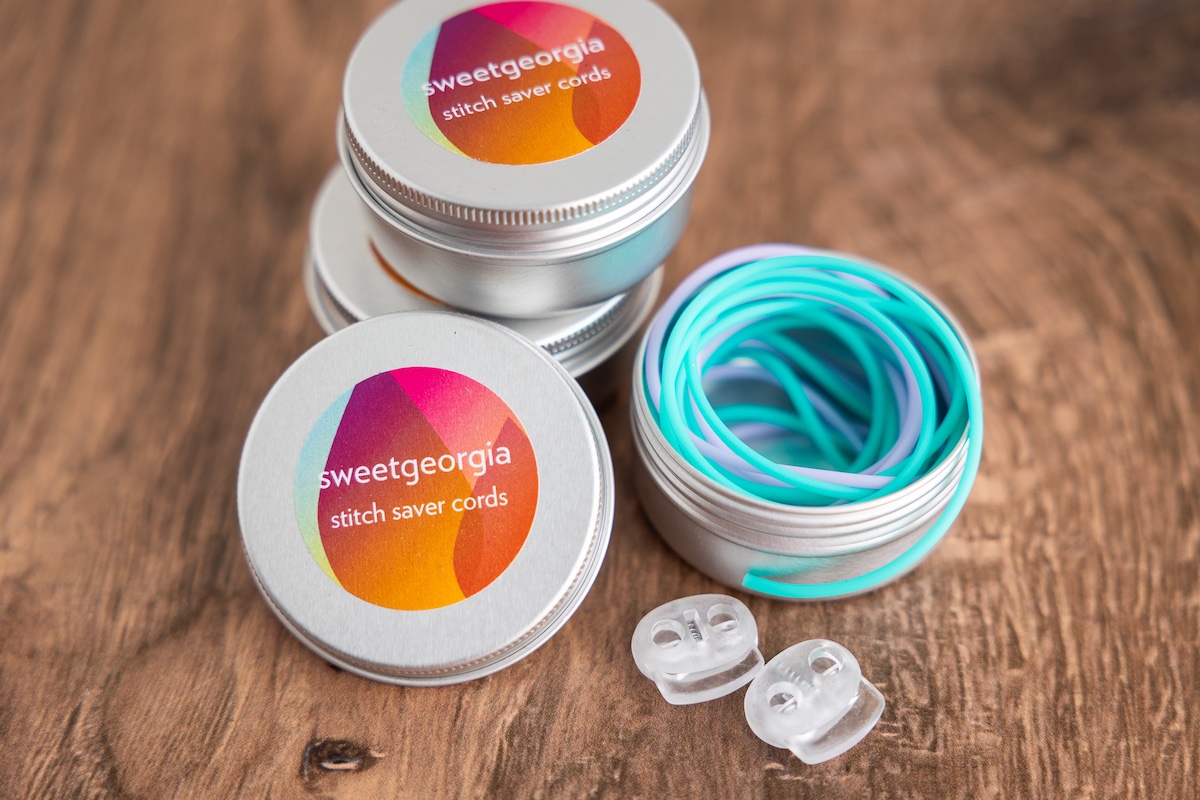
Cable Needle
If you’re knitting cables, this tool helps to keep your live stitches safe as you reorient them. They’re usually short and have grooves or are bent. With experience, some knitters skip using them, especially if they’re using a non-superwash wool that has a bit of grip. But a cable needle definitely helps when you’re starting out or working with slippery yarns.
Pen and Paper
It is a great habit to get into to record all your notes either on paper or in a notebook. If you prefer digital, make sure to use the markup tool to make important notes, as you knit!
Wet Blocking Tools
Blocking is an important finishing step. After your project is done, washing and blocking help it look its best.
Soap
Use a wool-friendly option like Soak or a biodegradable dish soap. Check the yarn label for care instructions.
Removing Water
You can soak your knits in a sink, tub, or basin. Use towels to press out water. Don’t wring it. This can distort your knitted fabric. Or, you can use the spin cycle on your washing machine or salad spinner to help remove water.
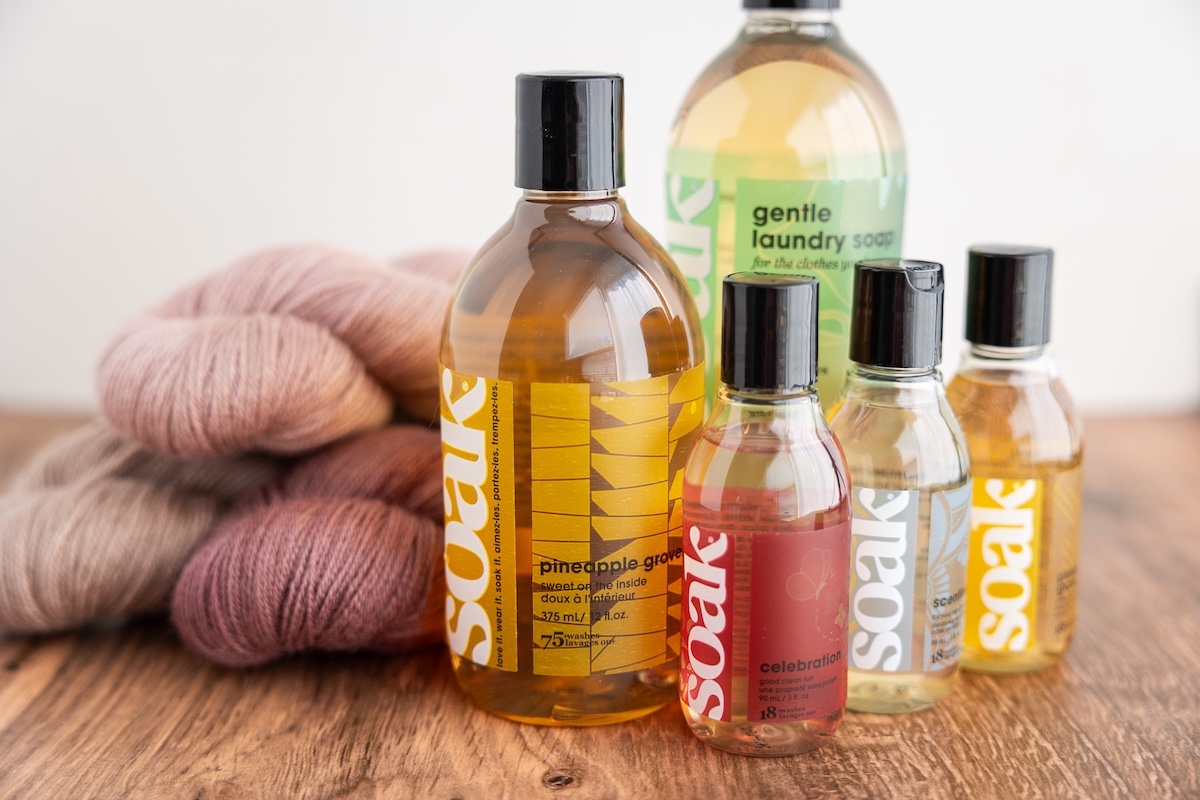
Blocking Mats and Pins
Lay your project out to dry. Blocking mats are ideal and easy to store. T-pins or knit blockers help shape lace or other delicate patterns and work great with blocking mats.
Steamers
For quick touch-ups or swatches, a handheld steamer works well. Just be careful around the steam, you don’t want to burn yourself.
Extras That Just Make Knitting Easier (and Fun)
These aren’t must-haves, but they make knitting more enjoyable and help you track your materials during and after a project.
Project Bags & Notions Pouches
You can never have too many! Keep your yarn, tools, and pattern all together. Having a separate pouch for your notions means no more digging for a lost stitch marker or needle.
Needle Gauge
The printed size on your needles could wear off. A needle gauge tool helps you figure out what size they are.
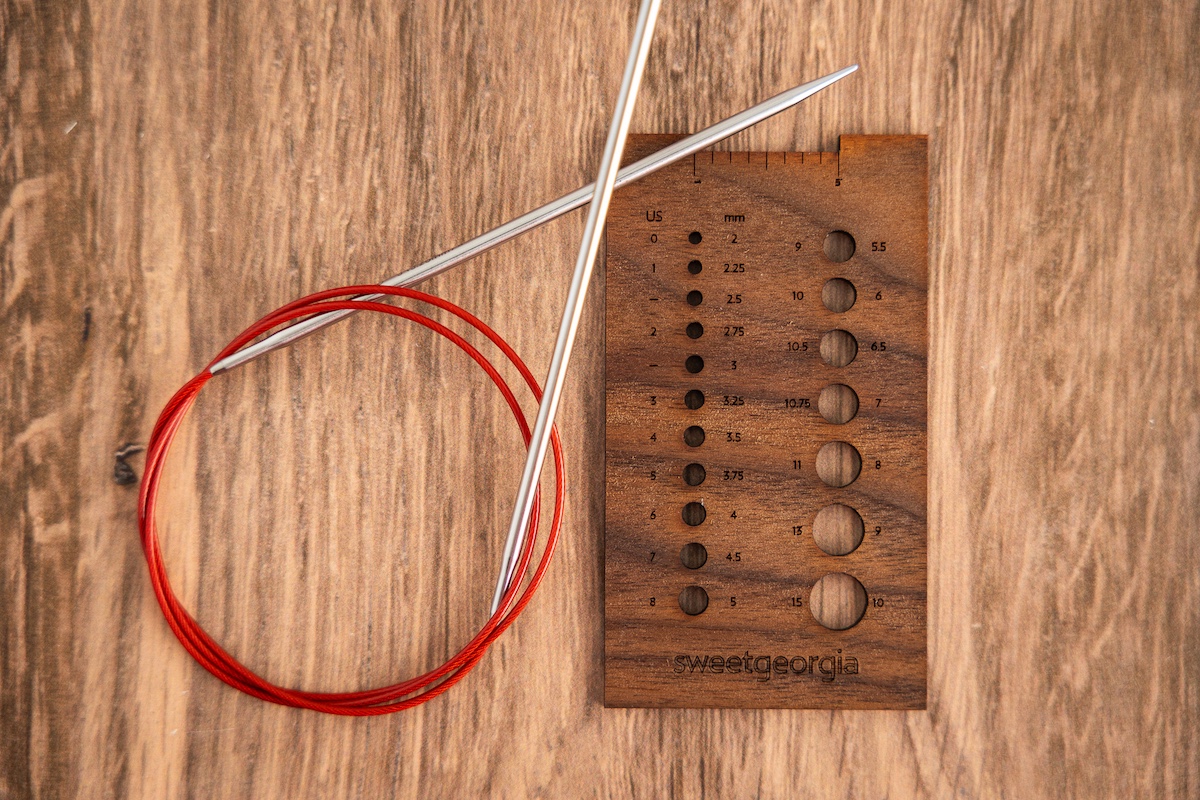
Niddy Noddy
If you’re winding leftover yarn back into skeins, a niddy noddy is the tool for that. We’ve got a guide to using one, too.
Digital Scale & Calculator
Helps you track how much yarn you’ve used, or how much you have left. Great if you’re trying to avoid playing yarn chicken.
Small Crochet Hook or Stitch Fixer
Dropped a stitch? This stitch fixer is your best friend.
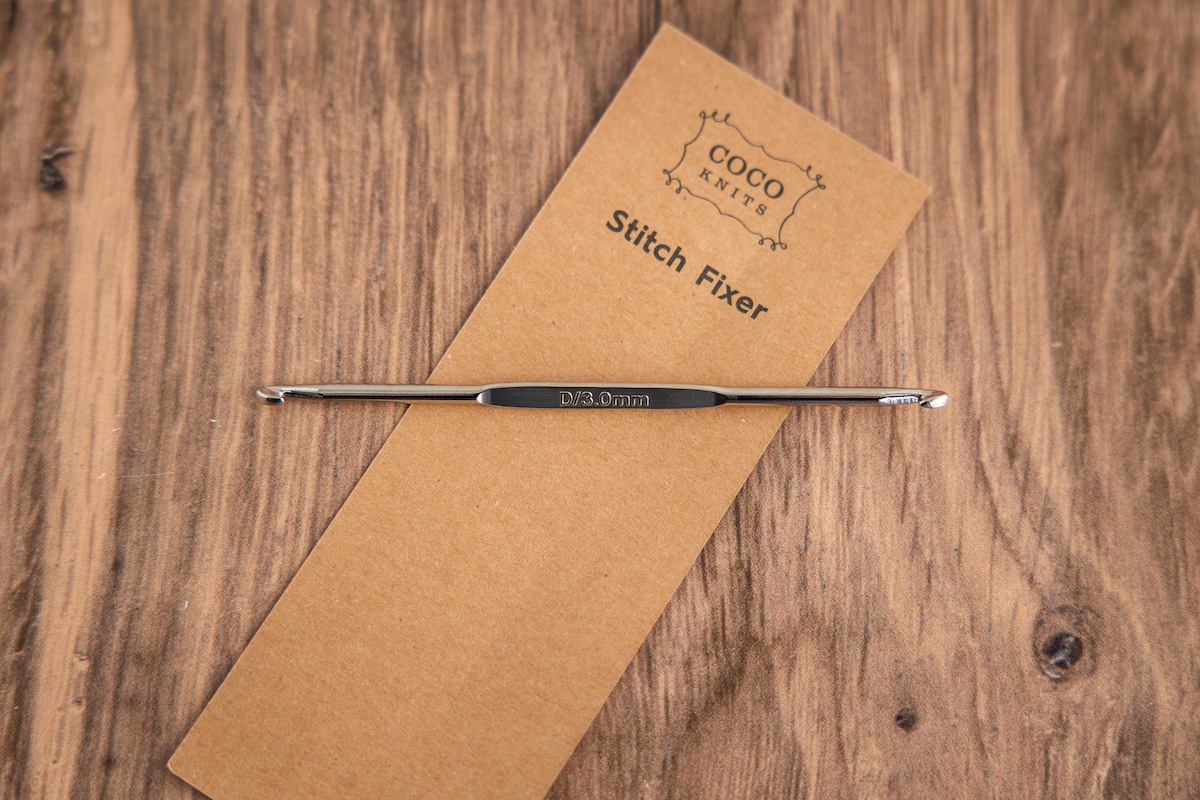
Final Thoughts on Knitting Tools
This isn’t a complete list, but it covers the tools and notions that come up most often in patterns and in conversation with fellow knitters. Each one can save you time, frustration, or just make your knitting experience a little smoother.
Courses to Help On Your Journey
At the School of SweetGeorgia, we have over 100 courses to help you on your fibre arts adventures. From knitting, spinning, crocheting, weaving, dyeing, and more, we are here to help. Here is a list of some of our basic knitting courses:
- Mastering Gauge
- Learn to Knit: First Scarf
- Knit Your First Sweater
- Knitting with Hand-Dyed Colour
- Modern Colourwork Knitting
- Custom Top Down Socks for Beginners
- Custom Toe Up Socks
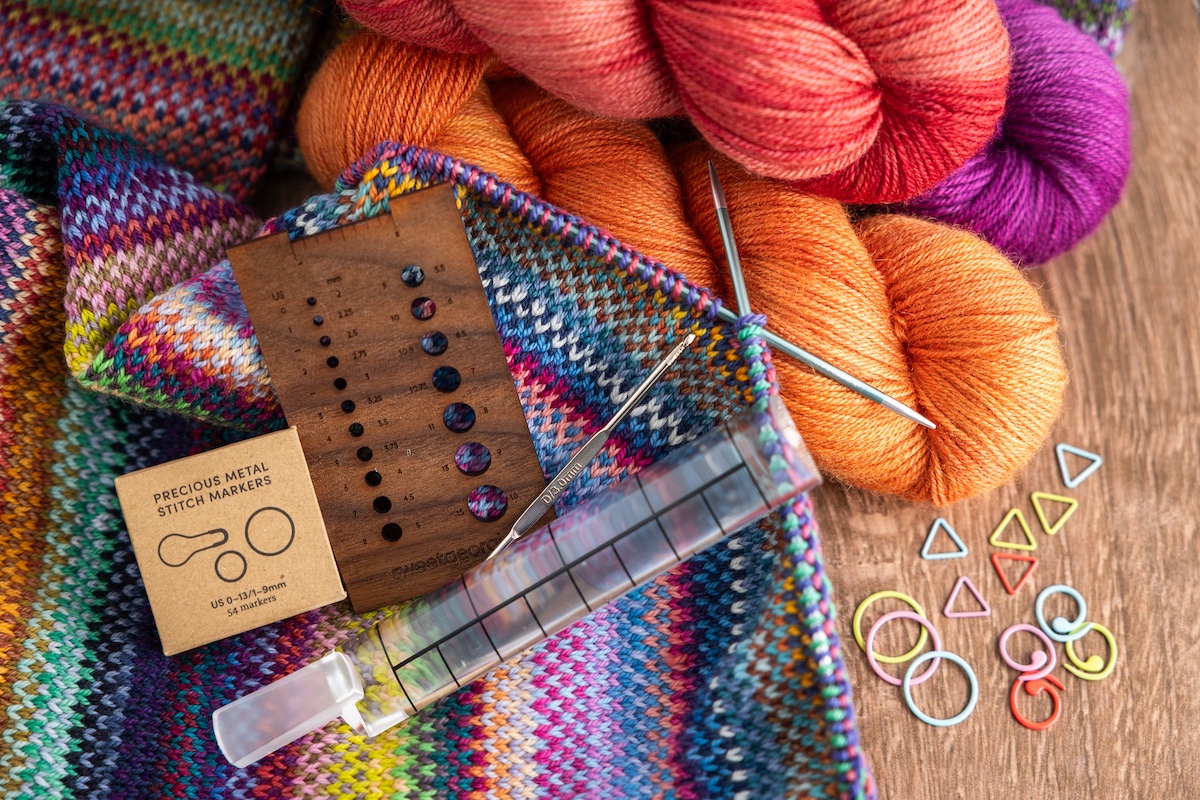
Join Our Community!
- At the School of SweetGeorgia, we’ve built a vibrant and welcoming community of fibre-loving makers, passionate instructors, and dedicated staff. Whether you’re looking for guidance on a new technique or just need a little creative encouragement, we’re here to support you every step of the way.
- Not yet a member of the School? We invite you to come and see what it is all about! Use the code: EXPLORETHESCHOOL to save 15% on an All-Access monthly membership!
- We welcome you to join us in our SweetGeorgia Community. This is where we share projects that inspire, have fibre-filled conversations, host make-alongs, and participate in a variety of virtual meetings! We discuss all things knitting, crocheting, spinning, weaving, machine knitting, and more!
- Want to stay in the loop? Subscribe to our newsletter! It’s a simple way to stay updated on what’s new at SweetGeorgia and the School of SweetGeorgia, catch up on the latest articles, watch new SweetGeorgia YouTube videos, and be a part of our community without any pressure to post. We value your presence, no matter how you choose to connect with us!
If you’re curious about any of these knitting tools and accessories, or have your own must-haves, we’d love to hear about them!
Checklist
Here is a quick checklist you can use to see what you have, need, and want!
The post Essential Knitting Tools & Accessories appeared first on SweetGeorgia Yarns.
Comments
Post a Comment